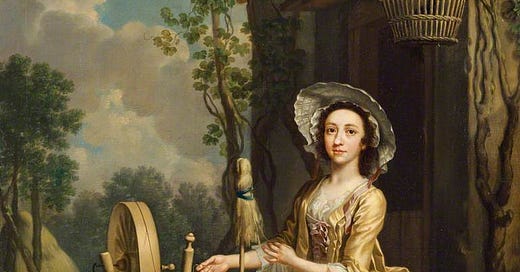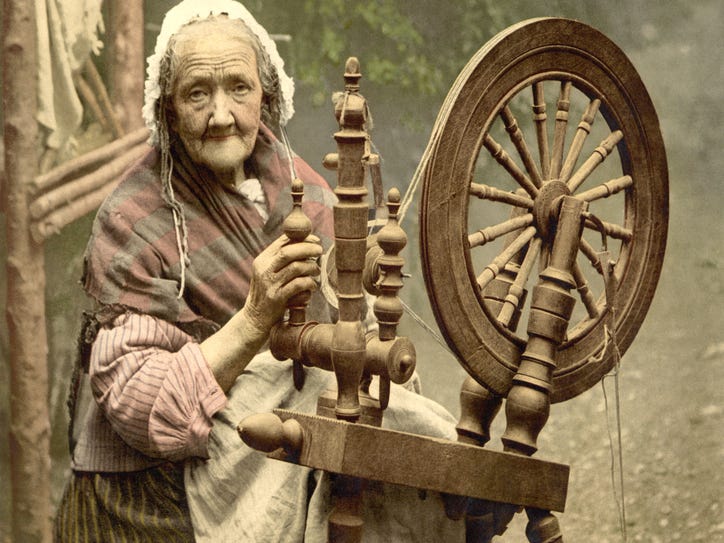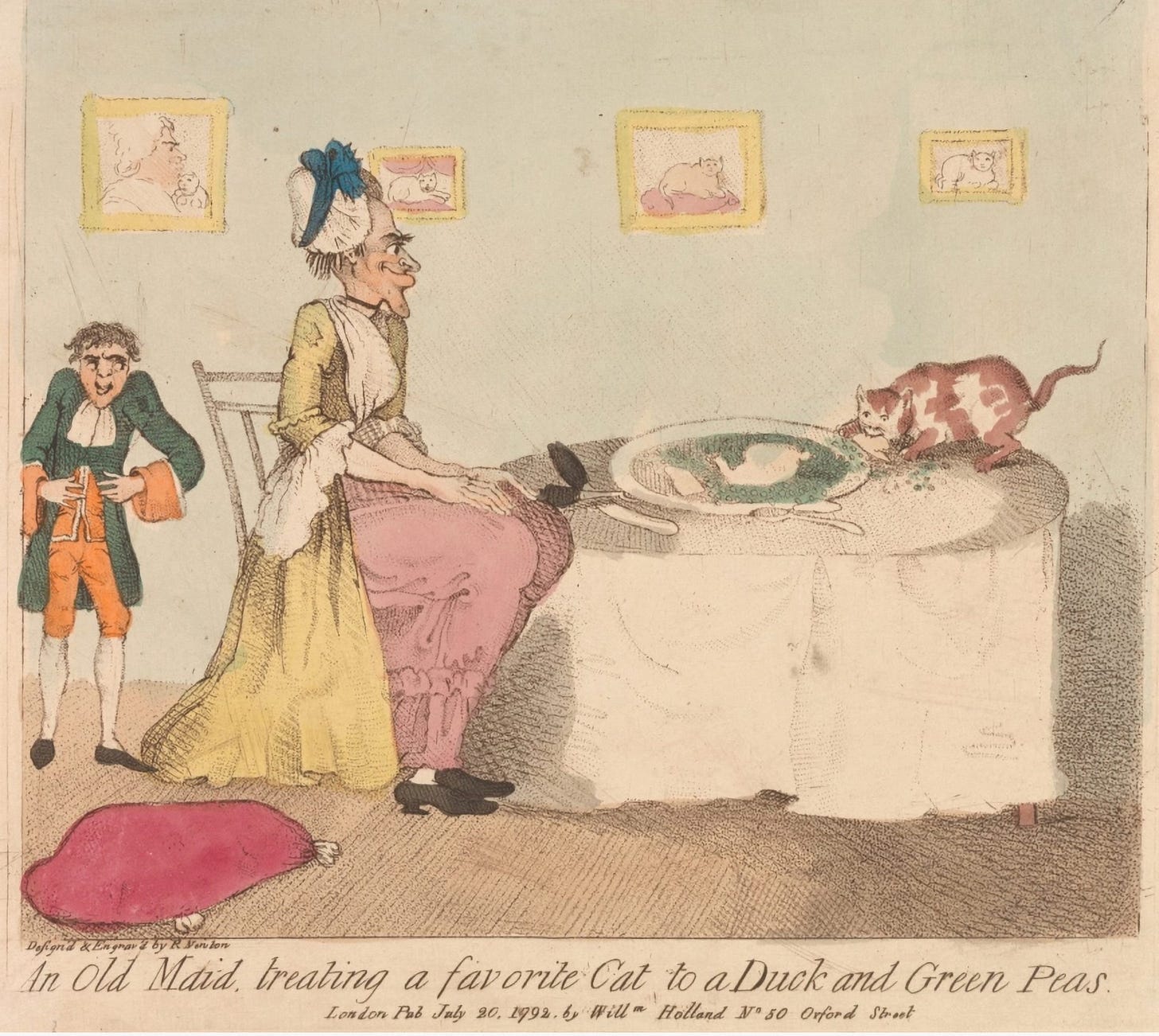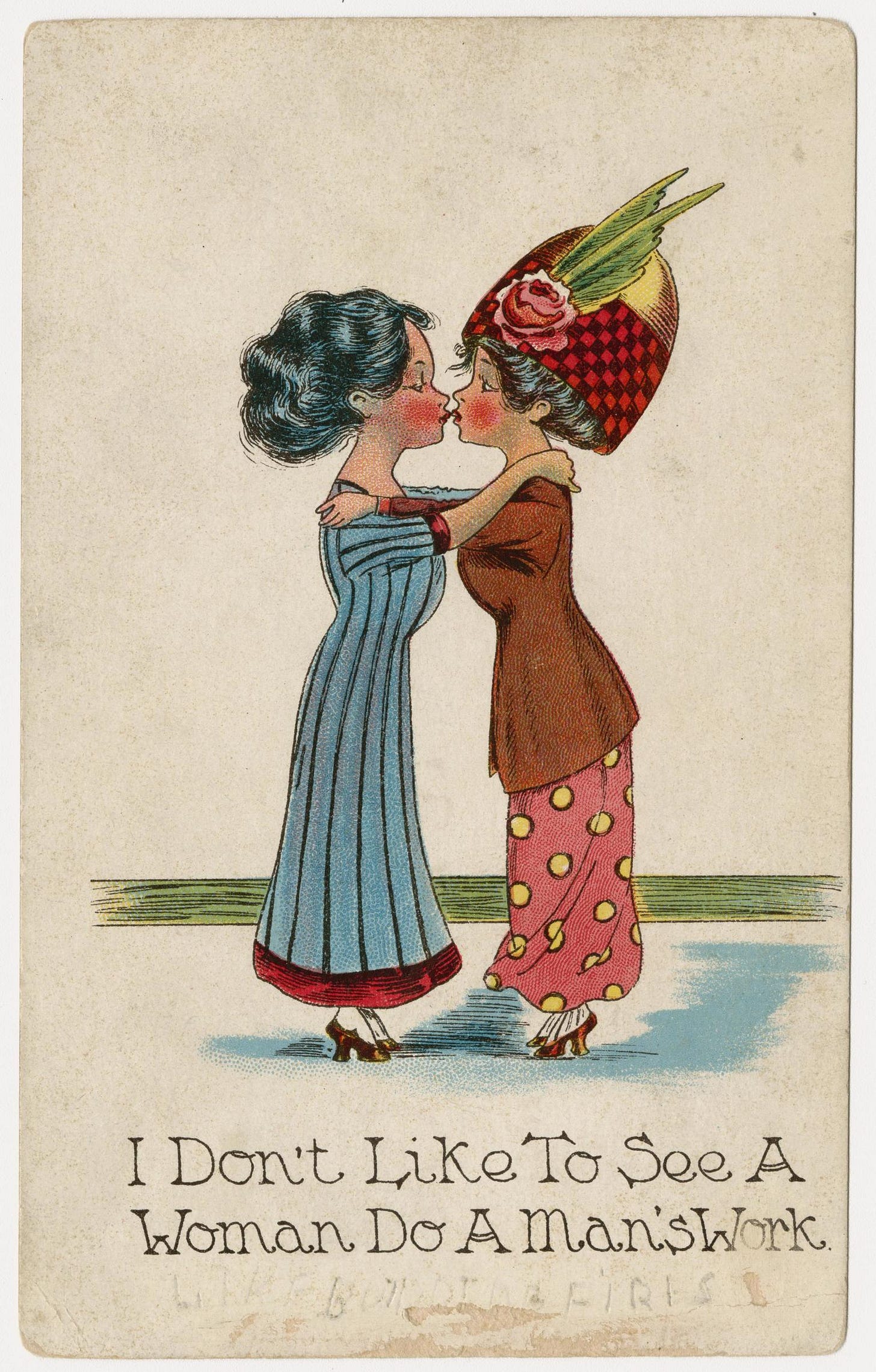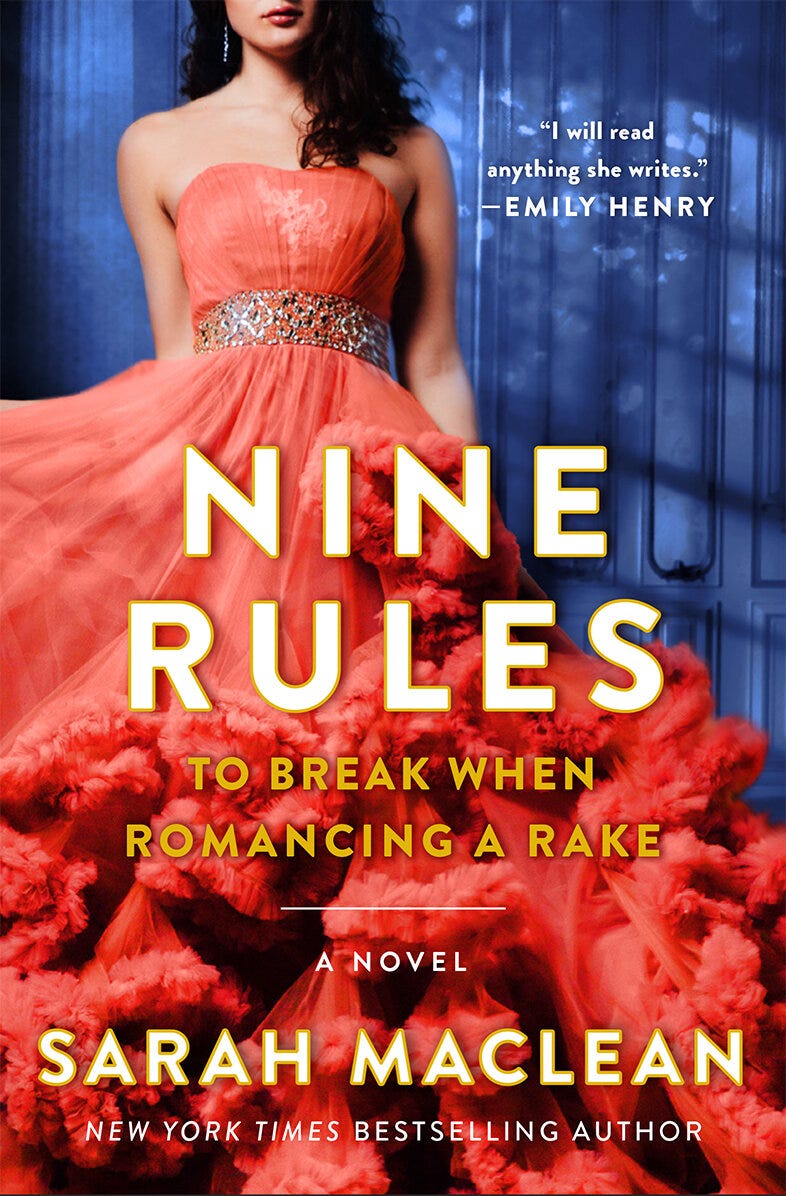This week, I need you to suspend your disbelief. Imagine a world so unlike our own that it’s almost impossible to fathom. In this world, men hold most seats of power, wealth is concentrated among a select few, and an unmarried woman past the age of thirty is a subject of scorn. Cat or no cat—though let’s be honest, she probably has a cat. This is the world of the Spinster! (dun dun dun dunnnnnnn).
Jokes (and thinly veiled political commentary that makes me nervous on the internet) aside, this week, we’re diving into the origins of the Spinster—the history, the politics, and, of course, the romance.
History
In the 1500s, a ‘spinster’ meant someone who spun wool for a living; 100 years later, the words ‘spinster’ came to denote a single woman, even in court and official records. Fifty years after that — in 1650 — it had become an insulting term for a woman who had failed to find a husband. It had lost its connotation of productive trade; it meant only a woman who had failed in her only work — that of marriage.
Normal Women, Philippa Gregory
Unsurprisingly, Philippa Gregory explained the transition of spinster from trade to pejorative better in three sentences than I could in three books. However, I shall valiantly piggyback off her work. The term ‘spinster’ originally referred to someone who spun wool. The term appeared around 1300 in the medieval period. Women dominated the wool trade, spinning wool into yarn. As spindles were cheap and accessible, spinning was an excellent source of income. Married women, busy with child-rearing and other duties, often outsourced spinning to unmarried women. Thus spinning became linked to singleness.
Politics
Around 1600, England's population began to stagnate, a worrying trend as the Continent’s numbers continued to rise. Historian Penelope J. Corfield estimates that by 1701, a quarter of marriageable-aged women remained unmarried. As Britain expanded its imperial reach, it needed citizens to populate its conquered lands. A childless woman, therefore, was increasingly seen as selfish and unpatriotic—how could she have a stake in society without a filial interest in the future? Why does this sound familiar… who knows!
Funny enough, there were actually more unmarried men than women, yet the attitude toward bachelors was strangely different (hilarious!). Since men could father children later in life, had ample employment opportunities, and good old sexism, bachelors were considered productive members of society. No one seemed particularly concerned about their lack of marital status—unlike their female counterparts. If only there were a term for standards that were doubled.
For middle- to upper-class spinsters without supportive families, employment opportunities were scarce. One of the limited options was working as a paid companion (a role that sounds horrible to me). As Jane Austen observed in her correspondence, it wasn’t necessarily spinsterhood itself that was so miserable—it was the poverty that often came with it. She wrote to her niece, “Single Women have a dreadful propensity for being poor—which is one very strong argument in favor of Matrimony…” Despite her famous love stories, Jane Austen remained a spinster until her early death—though she did receive a proposal.
It’s important to note that women had various reasons for choosing not to marry—one being a lack of attraction to men. Understandable. However, Rory Muir argues in Love and Marriage in the Age of Jane Austen that there is likely little correlation between marriage and sexual preference. Given the intense societal pressure to wed and the relative lack of pressure to remain faithful (in certain circles), convenience alone could be a compelling reason to marry. While men had ample opportunities for clandestine affairs despite sodomy laws, cohabitation posed greater challenges without arousing suspicion. Women, on the other hand, could live together without much scrutiny, especially if they were past marrying age. (More to come on ‘Boston Marriages’!)
It is tempting to shift the narrative and list examples of successful Spinsters in history, who undermine the stereotype. There were certainly plenty. However, that would diminish the real dangers that came with the position. An unmarried woman without economic means was incredibly vulnerable. The patriarchal establishment built a system that left unmarried women with few options—then condemned them for their predicament.
You may be thinking, this doesn’t feel very romantic… but fear not!
Romance
There is perhaps no more rewarding romance heroine than she who is not expected to find love. The archetype comes in many disguises—the wallflower, the spinster, the governess, the single mom—but always with one sad claim: Love is not in her cards.
Sarah MacLean
Spinsters have long been a beloved trope in romance novels, from Anne Elliot in Jane Austen’s Persuasion to Emily Fox-Seton in Frances Hodgson Burnett’s Making a Marchioness and Annis Wychwood in Georgette Heyer’s Lady of Quality—to name just a few. The trope remains popular in modern romance, with authors like Lisa Kleypas and Sarah MacLean embracing it.
At first glance, the spinster narrative may seem reductive—centering on a single woman finally achieving her supposed goal of marriage. And honestly, that’s a fair criticism. But as we established, these stories are set in periods where a woman’s success was determined in terms of their marriage. In response to this, many current romance authors introduce another lens—the freedom that comes with spinsterhood. Having either fallen short of or outright rejected societal expectations, these heroines carve their own paths. In society’s eyes, the worst has already happened—they are unmarried women past their so-called prime. But rather than being defeated by this, they embrace a newfound freedom. No longer bound by the pressures of securing a husband, they can pursue their own desires, ambitions, and adventures on their own terms. Love may just happen to find them along the way.
Read More
What’s left to lose?
If a woman passes marriageable age and society scorns her for it, she might just think, "Fuck it." Why follow the rules when there’s nothing left to lose?
Enter Lady Calpurnia. A newly minted spinster, she’s spent years adhering to every expectation—only to find herself exactly nowhere. So, she makes a daring decision: a bucket list of all the things a proper lady shouldn’t do. Attend a duel? Smoke a cheroot? Steal a kiss?
With nothing holding her back, Callie embraces her newfound freedom. And people—one man in particular—definitely take notice.
The One That Got Away
In a world where status and wealth dictate everything, love isn’t always enough. Jane Austen’s Persuasion has long inspired tales of love lost to societal pressure, and Lady Aline knows that heartbreak all too well. Falling for someone far beneath her station was a tragedy she could never forget.
But years later, her sweet stableboy returns—no longer a servant, but a ruthless industrialist. And now, Aline can no longer hide from the past… or from him.


